I knew that I was not looking to spend a lot. That ruled out the original Newburgh, New York produced models. If you are lucky enough to find one of those, it will most likely need a full mechanical, if not aesthetic restoration. Good restored examples of the GL Model (small, paddle style) start around $4K!! I know, I know you can find them cheaper on eBay, but on those $2K+ 'bargains', the TransTrem will not function properly, without the costly, full restoration. This is not a crap-shoot, 100% of the early Steinies require this mechanical restoration.
So I resigned myself to one of the overseas produced models, figuring that I can always upgrade the pickups and hardware, my standard m.o. The Spirit line looked promising, with the R (rock) fulcrum trem, and EMG Select pickups. Until I actually played one! The small GL style body shape is not comfortable to play! There is simply not enough guitar there, for you to rest your arm on, so your arm has to 'float', uncomfortably, above the guitar, for as long as you can hold it there. The patented Steinberger flip out leg rest or 'kickstand' does allow for the guitar to comfortably rest, on your leg, so at least the seated position is accounted for? In addition, all of the Spirit guitars come with the hum-single-hum pickup configuration, which I cannot stand. Its not that I don't appreciate the sounds and switching options, its just a matter of space. That many pickups takes up all of the 'picking space' between the strings and the face of the guitar. I like a single hum or dual hum configuration, which leaves me adequate space between the strings and the guitar, to dig in, with my pick. Between the pickups, where all of those sweet natural harmonics live! I was not interested in the GM (modified strat shape) series, as that seemed to defeat the purpose of a small, portable travel guitar.
Then just a few years ago, Steinberger introduced the Synapse line! They seemed to perfectly match my needs! The body is a slightly enlarged 'arrow' style, specifically shaped to accommodate the players resting arm! The Synapse line is the new top-of-the-line for Steinberger, even though they are built in Korea. They feature neck-through construction, a composite neck, maple, with a graphite 'U' channel, boxing the truss rod and a phenolic fingerboard, with a zero fret, instead of a nut. In addition these guitars come equipped with real EMG pickups, and a new headpiece, which allows for the use of the standard Steinberger double ball strings, as well as standard single ball end strings! There is some sort of locking clamp, mounted past the traditional string ball slots -- cool! So all of the original Steinberger technology, wrapped up in a $850 package?! Not exactly...
Across the entire Synapse line, there isn't a single guitar offered with a Steinberger Tremelo??! WTF!! OK, I understand no TransTrem, those things go for over $1K, if you can even find one. But no non-transposing S-Trem? No inexpensive R trem?? What gives? Disappointed, I once again put the idea of my perfect travel guitar on the back burner. I did have the idea about routing a Synapse for a trem, but in total that would be well over $1K, way more than I was willing to spend for a simple, travel guitar. I did check eBay from time to time, looking for a project guitar, parts, really anything. Finally, a couple of months ago, I find a Synapse 'carcass' with no hardware whatsoever for the ridiculous Buy It Now of........................................$45!!!!!
There has got to be a catch? Of course, there is. This guitar is stamped 'used' and the serial # has been partially removed, at the factory. Fancy way of saying 'factory 2nd'. The only flaw, having kept this guitar from being built is that the truss-rod is 'maxed out'. Meaning there is no adjustment left, but the ad clearly states that the neck is straight (which is a good thing!). These necks are extremely stiff, and stable due to the graphite reinforcing. So I am thinking that a straight, and stable neck, will either remain more or less straight, or it will bend into a bit of relief, with the addition of the strings tension. I figure for $45, plus $30 shipping, it is totally worth the risk. Hell, I can always actually use it as a boat oar, if it won't work as a guitar! lol Here is how the guitar comes to me:
Let me tell you, this guitar is perfect! It is 100% mint, as new condition! Not a spec of hardware in sight, save for the lone bridge ground wire. Every single hole for all of the hardware has also been pre-drilled. Even the volume and tone knobs have are countersunk for the nut and washer! Again, I figure for $45, I can route this thing for a Steinberger tremelo!! That is now the master plan. I find a source for brand new R trems, on eBay, Headless USA. The owner, Don Greenwald is a really cool guy, and is the source for Steinberger guitars, restorations and parts. I end up trading a brand new, complete Floyd Rose chrome, straight up for one of his R trems. I only had $100 into the Floyd, he gets $179 for the trems. Here is a link to Don's outstanding site, check out the Steinberger parts section, to see the basic R trem. http://www.headlessusa.com/
As you can see from the pics, my brand new Synapse comes with a very shallow 1/4" depth route, for the standard, fixed Steinberger bridge. Again, the fixed bridge is the only bridge available, on all Synapse guitars! I need the route to look like this:
This last pic shows the proper route, best.
The main, larger section of the trem route is 1/2" deep. The lower section, for the Steinberger spring assembly is 1 1/4" deep. The good news is that the overall footprint is identical, from the hard tail to the trem. So after lots and lots of careful measuring and marking, I prepare to attack my new Synapse carcass. I use a combination of a radial arm saw (yes I actually used this to rough in the spring cavity!) an actual Craftsmen router, and a dremel tool, I get the trem cavity to the shape it needs to be. There was tons of trial and error, fitting the trem, then making the cavity larger, a tiny bit at a time. I used the tried and true method of sneaking up on the shape I wanted, since once you remove the wood, you can't go back!! I must say the route came out great! Sorry no pics, but it looks just like the one above,except my spring cavity goes all the way to the front of the route, and there is a slight recess, for my R -trems locking feature. Oh yeah, I forgot to mention that the R-trem has a nifty little locking mechanism, that turns it into a functioning hardtail! Cool! Mine is also painted black. As hard as I tried, I did end up with one kind of noticeable (to me) little chip, on the edge of the route. :( Of course, I taped off all of the edges, but it still chipped a tiny bit, anyways.
This pic shows a complete, factory Synapse input jack. Kind of neat, but look at all of that wood, underneath the hardtail bridge!
So in comparing the pics; I finally figured out why no Synapse guitar comes with a trem! If you look at the original pics of my Synapse carcass, you will see that the input jack, is contained in this large cavity, to the center, rear of the guitar. This is a great idea, as it allows for the guitar plug and cable to be very unobtrusive, and routes it, directly to the electronics cavity. You can also see that a rather large chunk of wood had been removed, from the guitar body, to facilitate this cavity. Turns out that the input cavity and the necessary trem route occupy some of the same space, within the guitars body! So when I routed the deep 1 1/4" spring channel, I ate through, into the input cavity. Not a lot, but enough. Here's what I can't figure out: Wouldn't nearly every single guitar player give up this neat little input cavity deal, to have a functioning tremelo? I know that I sure would!! The now modified input cavity is actually a blessing in disguise, as the Synapse specific input plate is not available from the Steinberger (Gibson-Epiphone) parts department! So I was going to have to modify the input jack, anyways. Available parts from an authorized Epiphone dealer, heretofore referred to generically as 'Gibson' is a whole other story, here goes:
On the Steinberger website, it shows a nice, comprehensive list of available Synapse parts! Nearly everything is offered, except the maple wood/composite neck bodies, which I already have! So, apparently you can't order parts on the website. All they have is an 800 number to call. I do so, and eventually get to speak with a live person, at Gibson. He abruptly tells me that parts can only be ordered through an authorized Epiphone dealer, and to try Sam Ash or Guitar Center etc. I do a bit of quick internet checking, and find one horror story after another, about how all the 'new' Steinbergers are now 'orphans' and how you can't get parts from Gibson. Also lots of information about just how awful Gibson is to deal with. I did try Don at Headless USA, but he has had the same horrible luck, dealing with Gibson, and just says to me "good luck, getting parts from Gibson is an impossible horror show!" (paraphrasing!) So I try Musician's Friend, with no luck. I try Guitar Center, and they say that they will email me back in a day or so, with availability of parts, and if they will even be able to place the special order etc.
So as almost a last ditch effort I contact Dave's Guitar, in Wisconsin, as they are supposed to be the 2nd largest Gibson dealer in the U.S. , next to Musician's Friend/Guitar Center, presumably. They have a great guy, an actual contact person, in the parts dept. and he quickly gets back to me with prices and availability for Steinberger parts! I needed: the proprietary Synapse headpiece, the cavity cover plate, the strap button extension arm, the correct Steiny knobs, and the battery cover. I had alternative plans of cutting down the headpiece area, to accept the old style, which is readily available on eBay, cutting my own cavity cover out of pickguard material, and buying a battery cover off of eBay, just as contingencies. Brian, from Dave's Guitar calls me back, and says that he can only get 3 parts, and as luck would have it, the only parts on my list that are available are the ones that are 'must have'! The headpiece, the cavity cover, and the strap pin/extension. I have the parts within a week, even! Gibson did screw up and send me a headpiece for a 5 string bass, but I had the correct 6 string piece, and a drop ship tag for the return, within another week. Not to defend Gibson, but there were no part #'s on any of the parts I received? Whatever. I find the correct battery compartment on eBay (from China, go figure), pickup up a used set of EMG's and all pots and wiring etc. for $100!! BTW, the new Steinberger parts cost me $126 including shipping. I also pickup us a new Synapse gig-bag, and the fold out Steinberger leg-rest kickstand, from the same place the guitar came from for another $75. So I am into this guitar, including all shipping charges for only $475!!
The only thing left to do is the final assembly, which goes very smoothly. I do find that the Asian Steinbergers have a tendency to use the smallest, thinnest screws, barely capable of doing the job. Every part that I bought, the R-trem, the kickstand, the strap button extension; they all come with screws! Great, but half of them are too small and useless, in my opinion. Most of these were replaced from my Schaller screw assortment, with much better results. Oh yeah, I almost forgot, that last little bit of customization! Since the Synapse input jack was never an available part, I will have to rig up my own. Remember, I also routed into the input cavity, slightly with the trem route. I simply taped over the hole, with electrical tape, for a bit of shielding, since it will never show. I used a modded strat cup, which angles the input jack, and allowed me to screw it to the body, and to the cavity cover.
I know this pic is a bit fuzzy, but you can see the strat cup, and also the trem spring channel route.
Here you can see the stainless torx screw and captured nut I used to mount the strat input jack to the cavity cover. It worked really slick! The torx scew and captured nut are extra parts from my BMW Motorcycle!
Check out how well the cavity cover fits! I assume that there was a running change, at the factory, making the cavity route slightly larger, not matching up with the available parts. I may still cut my own cover, but this cover, not fitting just right, kind of 'fits' in with my Franken-Steiny theme! Plus I drilled two new holes, and the large one for the captured nut!
Here is the trem installed. You can see that chip, to the front of the rout. I did touch it up with black paint, but I will always know it is there!
A full body shot, with my leather Steinberger strap. Last pic is my Franken-Steiny with my GK 250 ML -- the ultimate in a compact electric guitar and amp rig!
This guitar plays very well. The actions isn't super low, but it isn't high, either. Reminds me of a typical bolt-on Fender strat, in the action/set-up department. The neck did give, a bit, as I thought it would, with the added string tension. I did use 9-46 gauge D'Addario strings, the hybrid set, with lower top strings, for even more added tenstion. It doesn't have what I would consider 'normal' relief, but there is enough, with no fretting out, the guitar sounds, over the entire fingerboard, and bends, outtasite, with ease. I really like the matte finish! I wasn't sure how I would like it, but it is very comfortable, to rest your arm on, and when your palm rests on the face of the guitar, for certain runs. The trem works great, and it locks, if you prefer a hardtail! I would describe the 'feel' of the trem as not as stiff and positive as a Floyd Rose, but not as loose and wiggly as a Kahler, a happy in-between medium. Overall, I am very happy with the results!


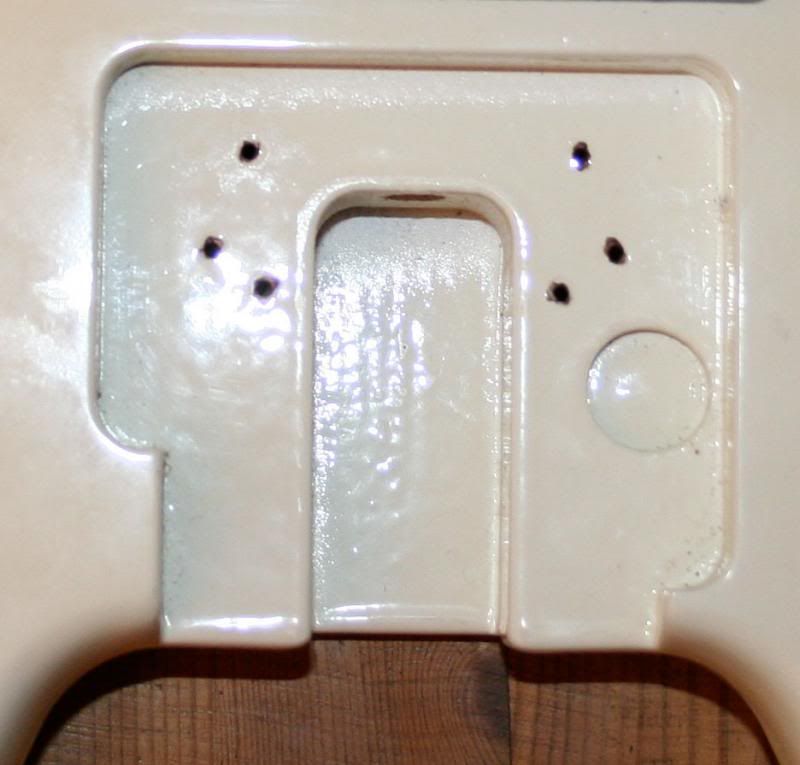
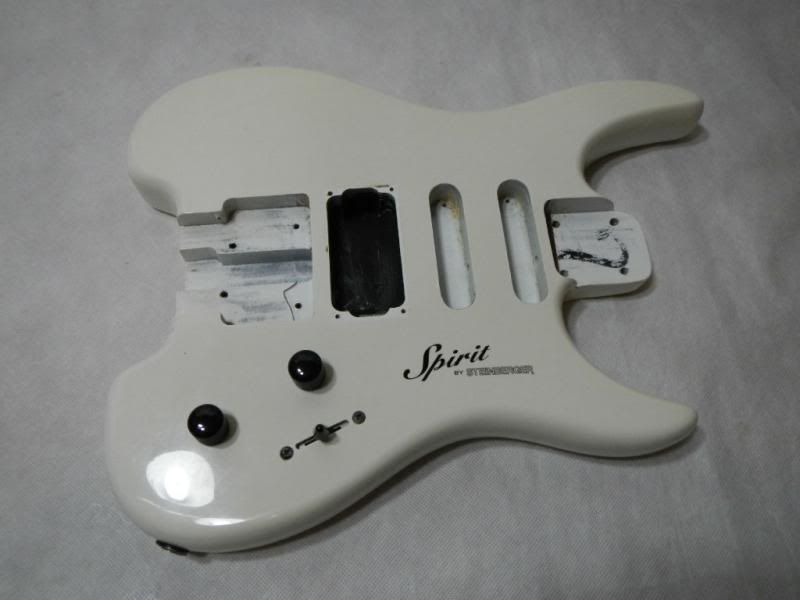

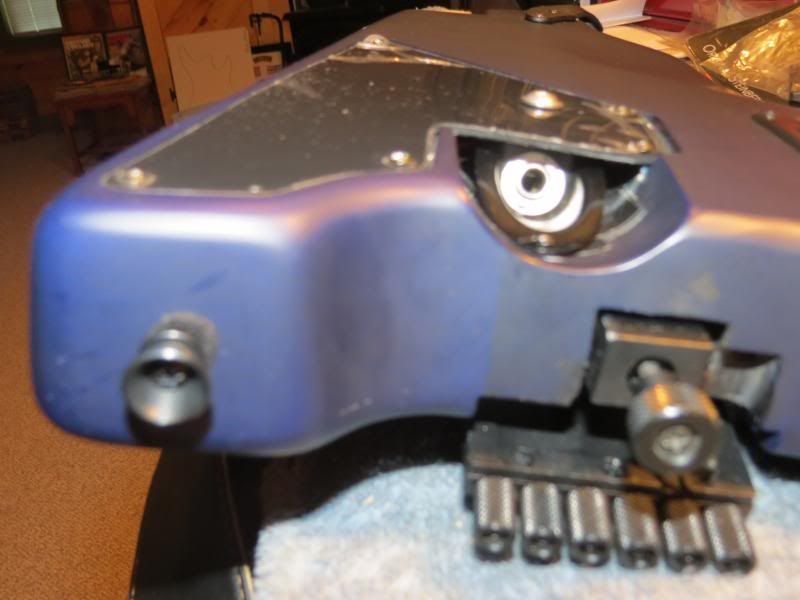

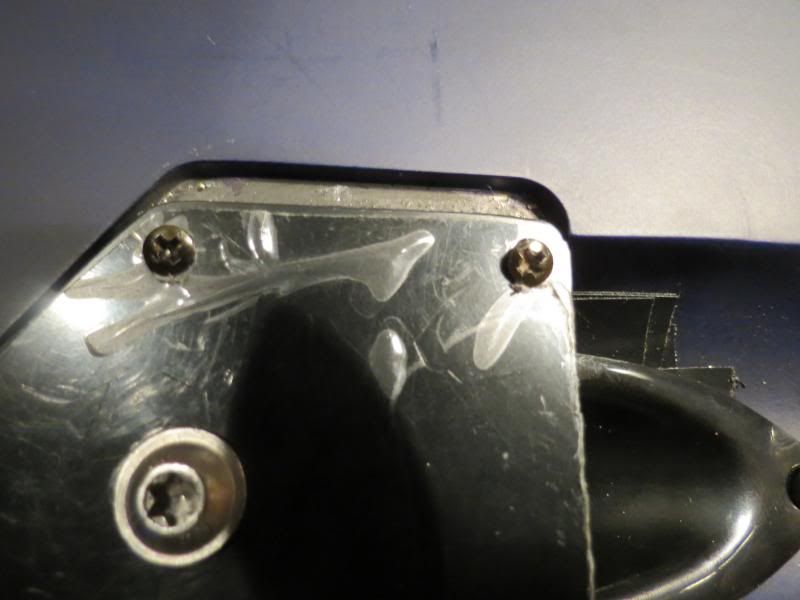
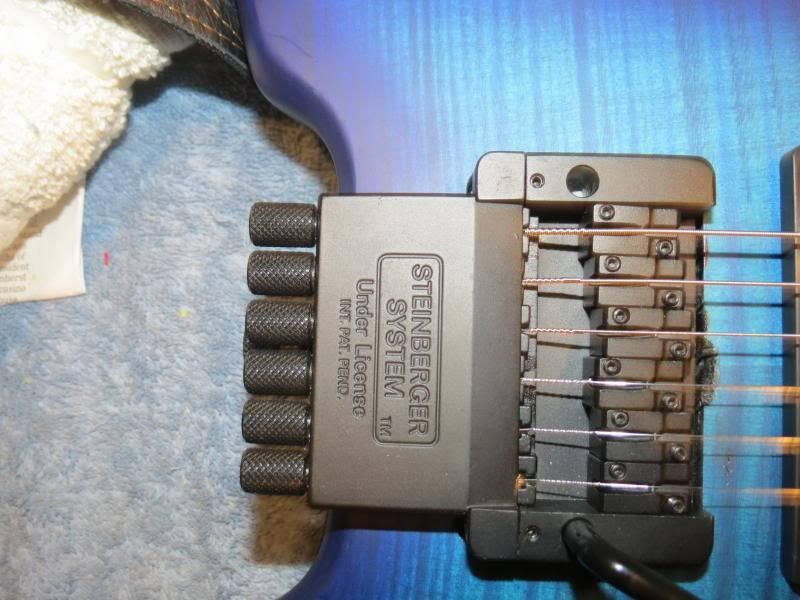

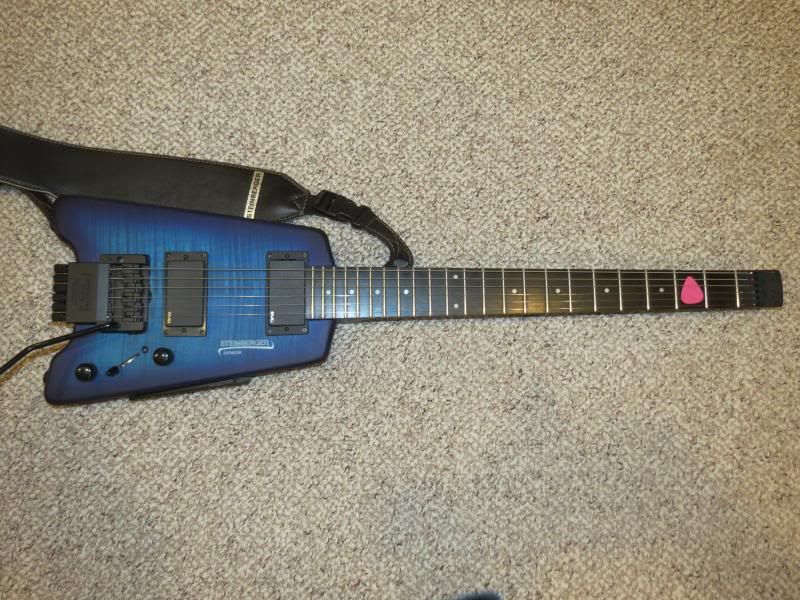
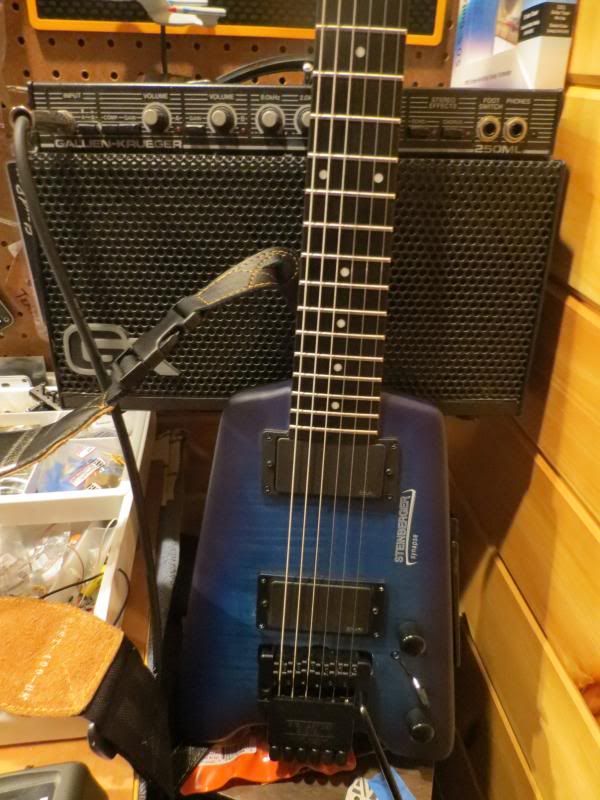
This looks brilliant - I recently bought an ss-2f just like the one here and am seriously considering adding an R-trem. Any chance you could upload a video or audio clip of the trem in use? Thanks!
ReplyDeleteJeffry; man I was thinking of doing the same thing. I like the Steinberger SS-2F but always wanted a trem on it but was told that it could not be done. But you proved them wrong my friend.
ReplyDeleteA quick question about that body if you still have it. What is the distance from the top of the neck pickup rout to the beginning of the bridge rout?
ReplyDeleteThanks.